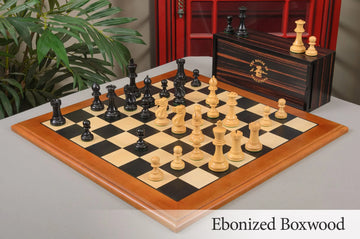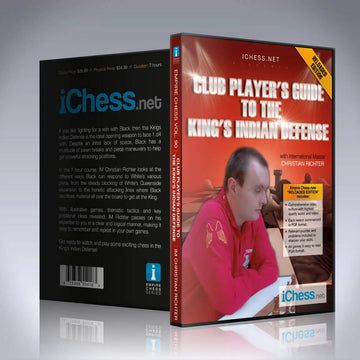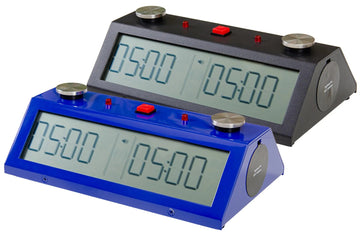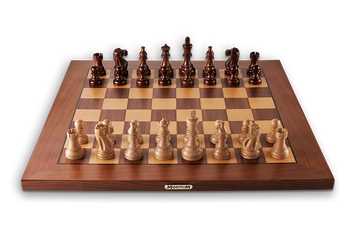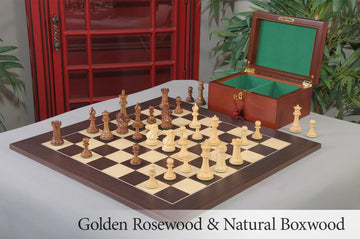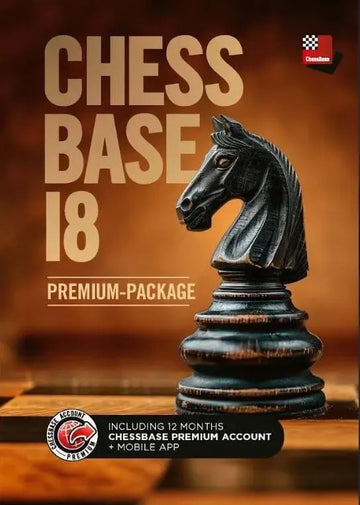Tame The King's Indian Defense With The Makogonov Variation
If you choose to begin the game with the Queen’s Pawn Opening (1. d4), then you must be ready to face the King’s Indian Defense. The King’s Indian has a deserved reputation for being aggressive, combative, and highly theoretical. You should expect a serious King’s Indian Defense player to arrive at the board armed to the teeth with opening preparation.
There are many different systems to fight against the King’s Indian. Today we are going to take a look at one of the most successful options for White: the Makogonov Variation.
In this article, you will learn:
- The main ideas behind the Makogonov Variation.
- Thematic middlegame plans for White.
- Our book recommendation to help you add the Makogonov Variation to your repertoire.

The Makogonov Variation: Introduction And Origins
The most common first few moves in the King’s Indian Defense are 1. d4 Nf6, 2. c4 g6, 3. Nc3 Bg7, 4. e4 d6, resulting in the following position:

Related: Learn to play the King’s Indian Defense with Black.
Now, White must make an important choice regarding which direction to take the game:
- 5. Nf3 is perhaps most natural, often leading to the Main Line after 6. Be2 and 7. 0-0.
- 5. Be2 can lead to a different setup when followed by 6. Be3 (the Semi-Averbakh Variation) or 6. Bg5 (the Averbakh Variation).
- 5. f3 is the double-edged Sämisch Variation.
- 5. f4 is the hyper-aggressive Four Pawns Attack.
But the move which outscores them all is 5. h3: the Makogonov Variation, named after the 20th century Soviet chess master Vladimir Andreevich Makogonov.

With an outstanding 49% win rate for White at master level, the Makogonov Variation definitely warrants consideration as your go-to weapon against the King’s Indian Defense. But what is it about this little pawn move that causes Black so many headaches?

The first point behind 5. h3 is that it prevents Black from playing …Ng4. White’s dark-squared bishop often wants to come to e3. However, Black can meet Be3 with the annoying …Ng4, threatening the bishop. This bishop is important for White, meaning that White really needs to move their bishop away once …Ng4 is played. Therefore one idea of h3 is to stop Ng4, allowing White’s dark-squared bishop to sit comfortably on e3.
The next section provides some additional middlegame ideas for White in the Makogonov Variation.
Thematic Ideas In The Makogonov Variation
The g4 Advance, To Prevent …f5
Every King’s Indian Defense player with Black learns about the importance of the …f5 pawn break. For example, in the King’s Indian Main Line (where White quickly castles kingside), Black usually pushes pawns on the kingside in an attempt to cause White’s king major discomfort.
The Makogonov Variation sees White take a different approach. Rather than commit their king to the kingside early, White often leaves their king uncastled, or even castles queenside.
Since, in many cases, the White king is not on g1 in the Makogonov Variation, White has the interesting idea g4 - a move which the pawn played to h3 earlier helps make possible.

With White pawns on e4 and g4, Black can find it very difficult to play their typical …f5 pawn break. As a result, Black will need to find another plan.
Castling Queenside And Attacking The Kingside
The game Zilka vs. Bobras, 2021 was a brilliant demonstration of how White can leave Black’s kingside in ruins. White chose to play 12. 0-0-0, creating a battle of opposite-side castles.
Here, White played 13. g4, forcing open the g-file. Black’s position is already uncomfortable.

A few moves later, White had transferred his queen and rook to the g-file, enabling him to play the flamboyant move 22. Nf5!!. Note that Black cannot capture this knight with 22. …Bxf5?? due to 23. Qxg7#.

Two moves later, White executed an exchange sacrifice to destroy the last vestiges of defense around Black’s king, via 24. Rxg6+! Black resigned shortly thereafter, unable to hold off White’s raging attack.

A More Positional Approach
One of the great things about 5. h3 is its flexibility. White isn’t committing to an all-out attack just yet. Depending on Black’s play, White may still castle kingside and go for a more sedate game.
The game Anton Guijarro vs. Radjabov, 2016 was a good example of this. Black played an early …c5 (instead of the more typical …e5 move in the King’s Indian Defense) and subsequently captured on d4, transposing to a kind of Maroczy Bind pawn structure.

From here, White’s play was much more positional. He played g3, Bg2 and 0-0 - looking to outplay Black slowly, through the accumulation of small advantages.

As you can see, the Makogonov Variation can lead to a rich variety of different positions.
Related: Improve your understanding of positional chess with World Chess Champion Strategy Training For Club Players.
Getting Started With The Makogonov Variation
This article has provided a solid introduction to playing the King’s Indian Defense, Makogonov Variation. However, before you employ it in your serious tournament games, we recommend furthering your education.
You can be sure that your opponents playing the King’s Indian Defense with Black will have done their homework on the Makogonov Variation. You must put in the work too!
Book Recommendation
If you were to choose just one book to help you learn the King’s Indian Makogonov Variation, then you couldn’t do any better than The Makogonov Variation: A Ruthless King’s Indian Killer.

It features:
- a quickstart guide to help you get up and running with the Makogonov Variation as quickly as possible.
- 46 annotated master games, to help build your awareness of the typical plans, maneuvers, and strategic objectives.
- bonus content on how to play in case Black tries ideas from other openings - such as the Benoni or Benko Gambit.
Summary: Is The Makogonov Variation Right For You?
The Makogonov Variation can be a great way to fight against the King’s Indian Defense if you:
- Prefer to be the aggressor: King’s Indian Defense players are generally most comfortable when they are attacking. The Makogonov Variation frequently allows White to switch roles, launching an attack on Black’s king rather than the other way around.
- Enjoy sharp, dynamic positions: Rather than attempt to steer the game into calmer waters, the Makogonov Variation sees White fight fire with fire, responding to the aggressive King’s Indian Defense with razor-sharp play of their own.
- Are happy to commit to some opening study: Although not as theoretically heavy as the King’s Indian Main Line, there are still some lines to learn in the Makogonov Variation. Learning the first few moves will help save time on your clock and make sure you can reliably reach a playable middlegame.
If that sounds like a way of combating the King’s Indian Defense that you would enjoy, then continue your education in the Makogonov Variation today!

